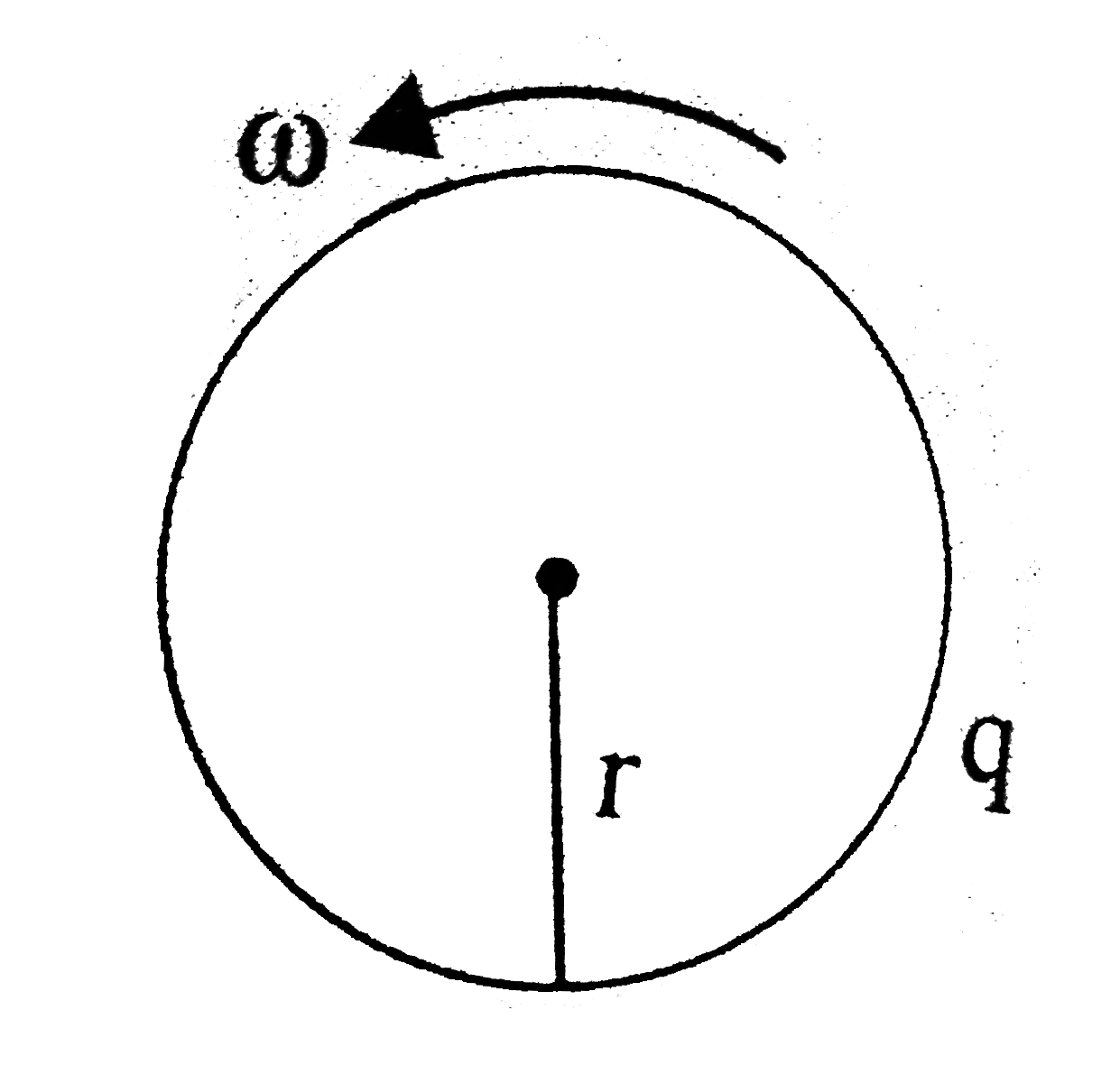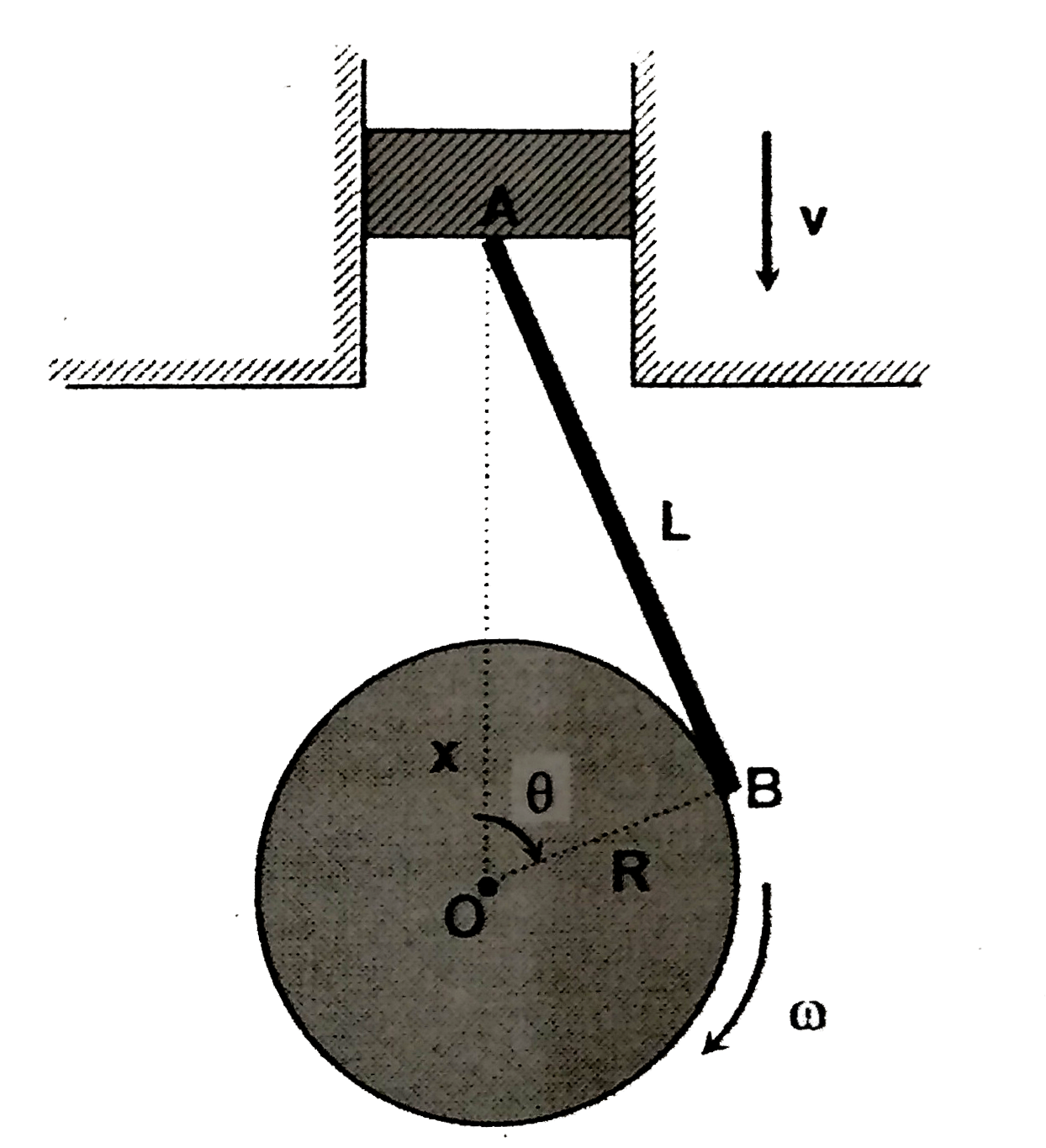two cylindrical hollow drums of radii R and 2 R, and of a common height h , are rotating with angular velocities ω (anti- clockwie ) and ω (clockwise ) , respectively , their axes , fixed are parallel and in a horizontal plane separted by by 3R + δ , they are now brought in contact (δ→0)
(A) show frictional forces just after contact .
(B) identify forces and torque external to the system just contact ,
(c) what would be the ratio of final of final angular velocities when friction ceases ?
(1) 
(ii) F' = F=F('') where F and F'' and external forces through support, External torque =F×3R, anti-clockwise,
(ii) Let ω1 and ω2 be final angular velocities (anti-clockwise and clockwise respectively),
Finally there will be no friction, Hence, Rω1=2Rω2⇒ω1ω2=2

Topper's Solved these Questions
- ROTATIONAL MOTION BOOK - VMC MODULES ENGLISHCHAPTER - ROTATIONAL MOTION EXERCISE - LEVEL - 1
45 Videos
- ROTATIONAL MOTION BOOK - VMC MODULES ENGLISHCHAPTER - ROTATIONAL MOTION EXERCISE - LEVEL - 1 (Angular Momentum, Collision)
15 Videos
- ROTATIONAL MOTION BOOK - VMC MODULES ENGLISHCHAPTER - ROTATIONAL MOTION EXERCISE - LEVEL-0 (SA-II Short Answer Type -II)
12 Videos
- REVISION TEST-2 JEEBOOK - VMC MODULES ENGLISHCHAPTER - REVISION TEST-2 JEEEXERCISE - PHYSICS
25 Videos
- SIMPLE HARMONIC MOTION BOOK - VMC MODULES ENGLISHCHAPTER - SIMPLE HARMONIC MOTION EXERCISE - 7-previous year question
46 Videos
Similar Questions
two cylindrical hollow drums of radii R and 2 R, and of a common height h , are rotating with angular velocities ω (anti- clockwise ) and ω (clockwise ) , respectively , their axes , fixed are parallel and in a horizontal plane separated by by 3R + δ , they are now brought in contact (δ→0)
(A) show frictional forces just after contact .
(B) identify forces and torque external to the system just after contact ,
(c) what would be the ratio of final of final angular velocities when friction ceases ?
View SolutionTwo cylindrical hollow drums of radii Rand2R, and of a commom height h, are rotating with angular velocities ω (anti-clockwise) and ω (clockwise), respectively. Their axes, fixed are parallel and in a horizontal plane separated by (3R+δ). They are now brought in contact (δ→0).
(a) Show the frictional forces just after contact.
(b) Identify forces and torque external to the system just after contact.
(c ) What would be the ratio of final angular velocities when friction ceases ?
View Solution
Knowledge Check
A disc is rotating with angular velocity ω. A force F acts at a point whose position vector with respect to the axis of rotation is r. The power associated with torque due to the force is given by
A(→r×→F).→ωB(→r×→F)×→ωC→r.(→F×→ω)D→r×(→F.→ω)
A conducting ring of radius r having charge q is rotating with angular velocity ω about its axes. Find the magnetic field at the centre of the ring.

View SolutionA conducting ring of radius r having charge q is rotating with angular velocity ω about its axes. Find the magnetic field at the centre of the ring.

View SolutionA ring of radius 'r' and mass per unit length 'm' rotates with an angular velocity 'ω' in free space then tension will be :
View SolutionTwo discs A and B are in contact and rotating with angular velocity with angular velocities ω1andω2 respectively as shown. If there is no slipping between the discs, then

View Solution
Find velocity of piston A in the given situation if angular velocity of wheel of radius R is ω (constant) in the clockwise sense (O is fixed point)
View SolutionA solid sphere of radius r and mass m rotates about an axis passing through its centre with angular velocity ω. Its K.E. Is
View SolutionA ring of mass m and radius R is given a charge q. It is then rotated about its axis with angular velocity ω.Find
(iii)Magnetic moment of ring.
View Solution
